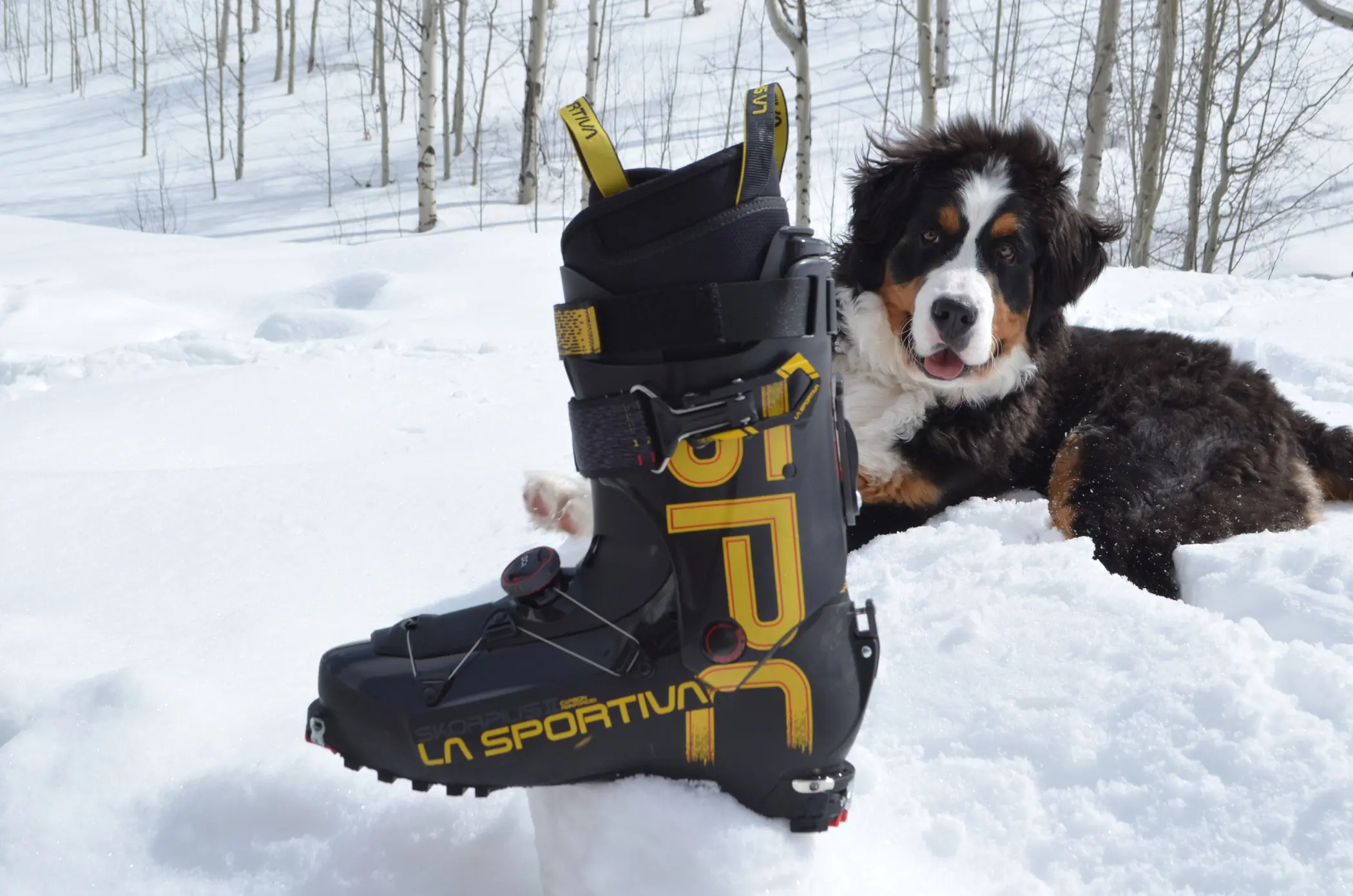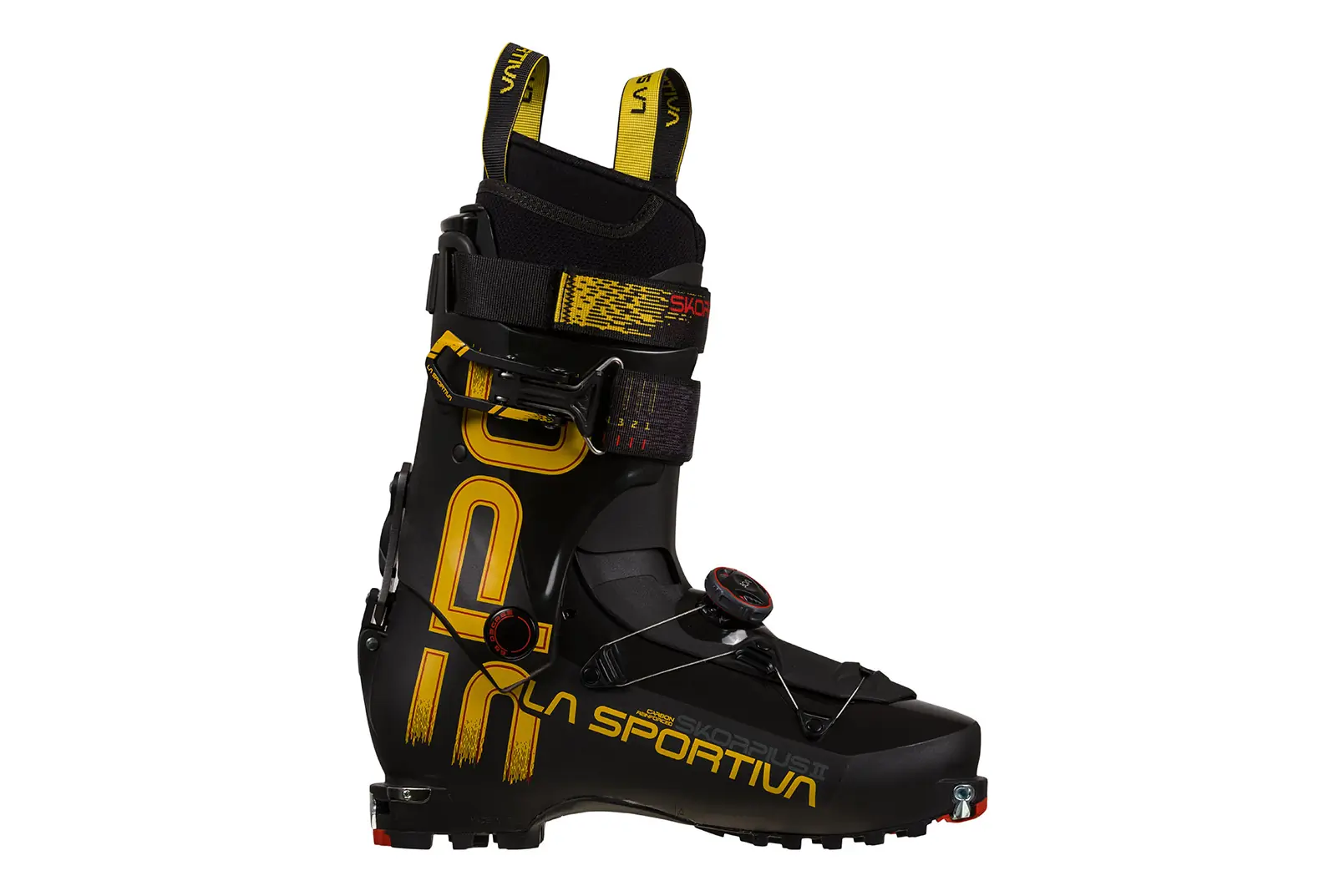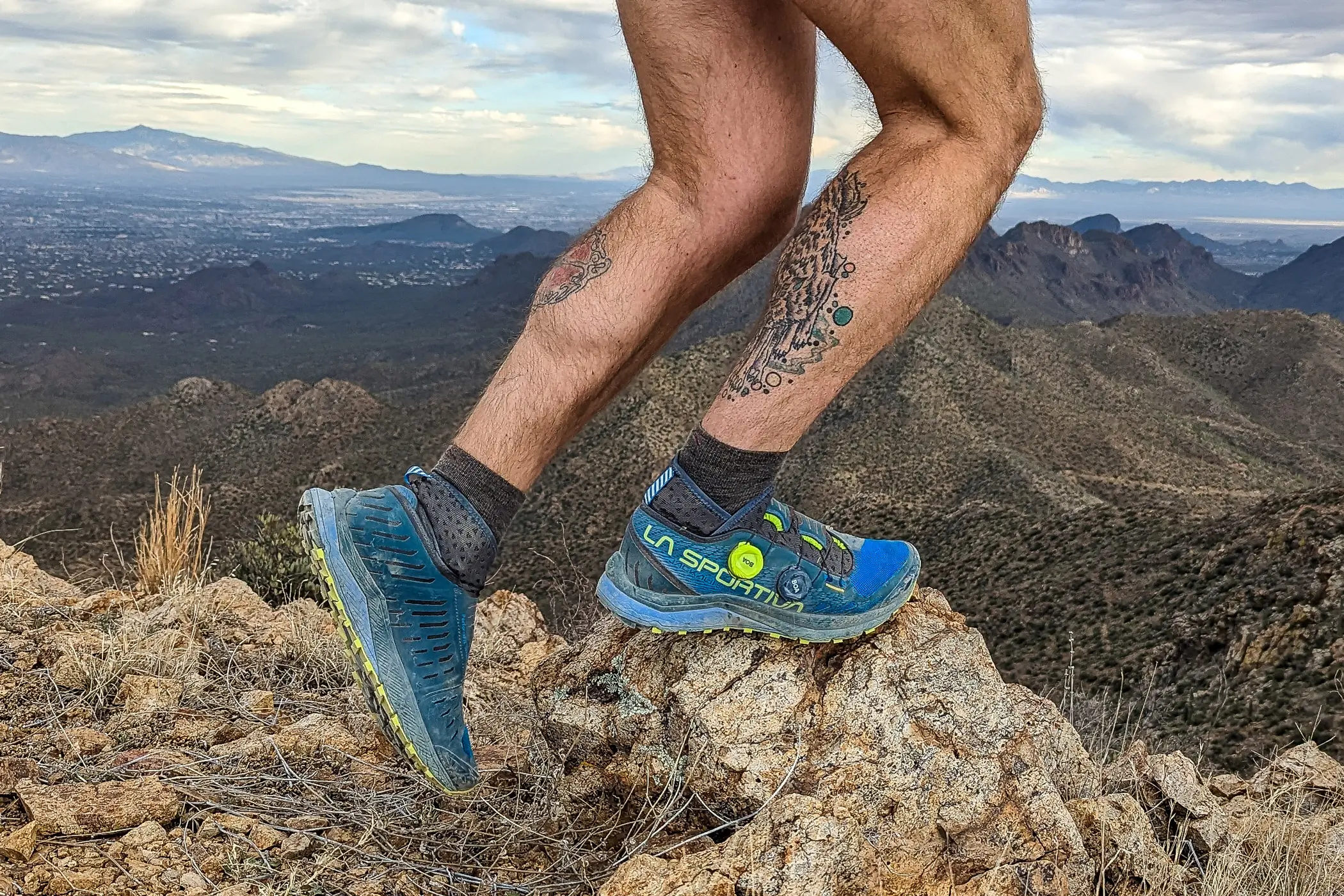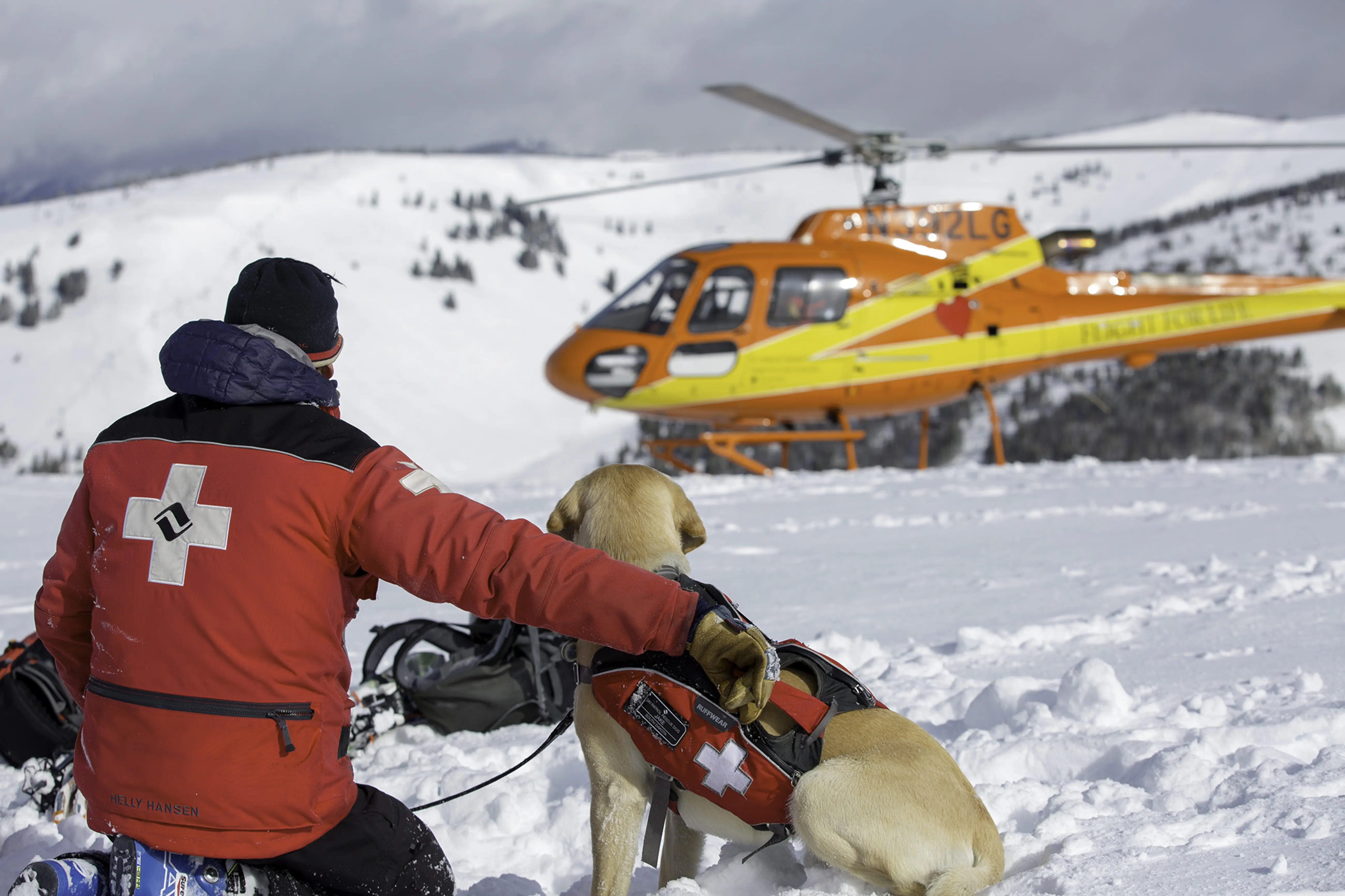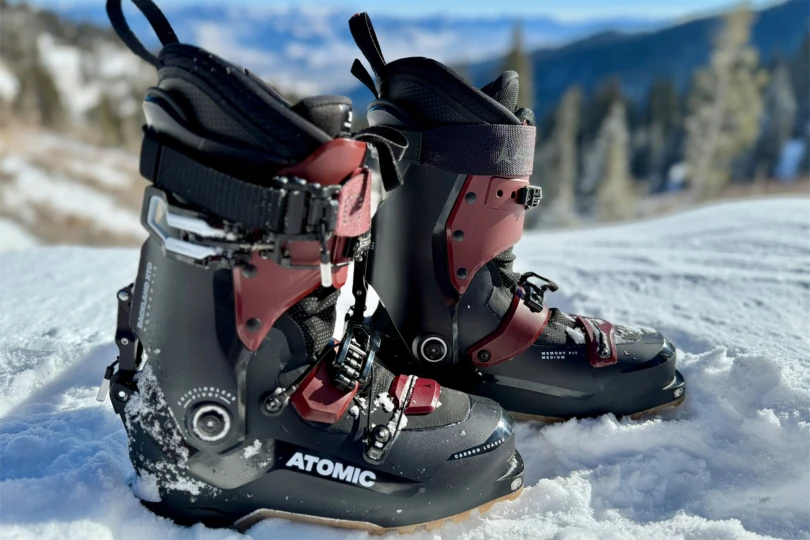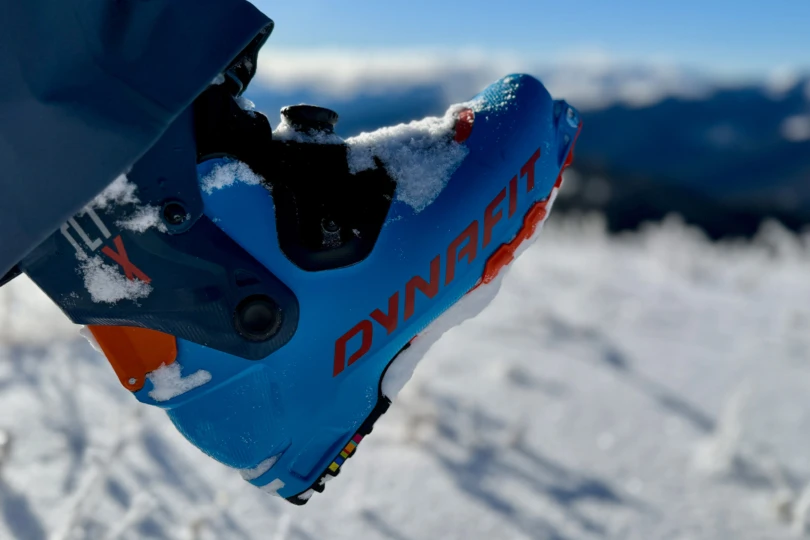I was deep into a ski tour when I started to question why I hadn’t turned around earlier. The entire south aspect of the route I was on hadn’t seen fresh snow in over a week. Instead, it had been baking in the late winter sun and refreezing each night, forming the harshest breakable crust all season. I’ve learned the hard way that crusts like this eat lightweight touring boots for breakfast.
I pointed it downhill and pushed forward into my first few crunchy turns. It wasn’t fun. But I didn’t blow a knee either. I attribute a lot of that relative success to my boot not folding over with each punch through the crust. I had remarkable control over my Kastle TX103s through the chunder. That’s the Skorpius CR II boot for you. It’s a newly updated lightweight boot from La Sportiva that provides vastly more support than other boots in its class.
I had a lot of fun testing the Skorpius in Colorado’s Gore Range with a quiver of skis over many miles and snow conditions, both excellent and treacherous.
In short: La Sportiva’s new Skorpius CR II ($849) is one of the few lightweight touring boots powerful enough to drive your entire backcountry ski quiver. At a scant 1,190 g per boot, they rise to long days in the backcountry, big spring missions, and even the occasional skimo race. Dedicated human-powered skiers in search of a lightweight do-it-all touring boot will find a friend in the Skorpius. That’s if they can get along with the BOA dial and Velcro strap buckles.
- Weight: 1,190 g (per boot, size 27)
- Sizes: 23-31.5 (including half sizes)
- Shell material: Pebax bio-based Rnew 1100 w/ 10% carbon reinforcement
- Cuff material: Pebax bio-based Rnew 1100 w/ 30% carbon reinforcement
- Liner: Thermomoldable high-density PEE and open cell low-density PU w/ flex inserts
- Sole: La Sportiva Grip Guard (complies with ISMF standards)
- Range of motion: 68 degrees (33 back/ 35 front)
- Forward Lean: 3 positions (12, 14, 16 degrees)
- Buckles: Swing-Lock Closure System, BOA Fit System, Easy 2 Wear Closure System, optional power strap
- Flex: 100
- Last width: 102.5
- Binding compatibility: TECH, A.T.
Pros
- Powerful on the downhill
- Pilots different backcountry skis easily
- Comfortable out of the box
Cons
- BOA dial and Velcro power strap take some adjusting to get right
La Sportiva Skorpius CR II Review
The Up
The Skorpius’ impressive specs translate to the uphill. At 1,190 g per boot (size 27), they are competitive in the just-over-1kg class of boots. They’re about 70 g lighter than the Scarpa F1, yet 90 g heavier than the new Salomon MTN Summit Pro.
Their 68-degree range of motion is impressive. I doubt my ankle could handle more than that anyway. The lack of resistance within that range also sets the boot apart from others in the category. That has a lot to do with the liner’s flex inserts. My stalwart Intuition liners, for example, put up more resistance.
Overall, the Skorpius’ thermomoldable liners, paired with a wide shell last, and are quite comfortable. I haven’t felt the need to mold them because the toebox is so generous. When I first put the boots on, I thought they may have been too big given that my toes weren’t absolutely smashed. I soon realized that touring boots don’t have to be painful to ski well.
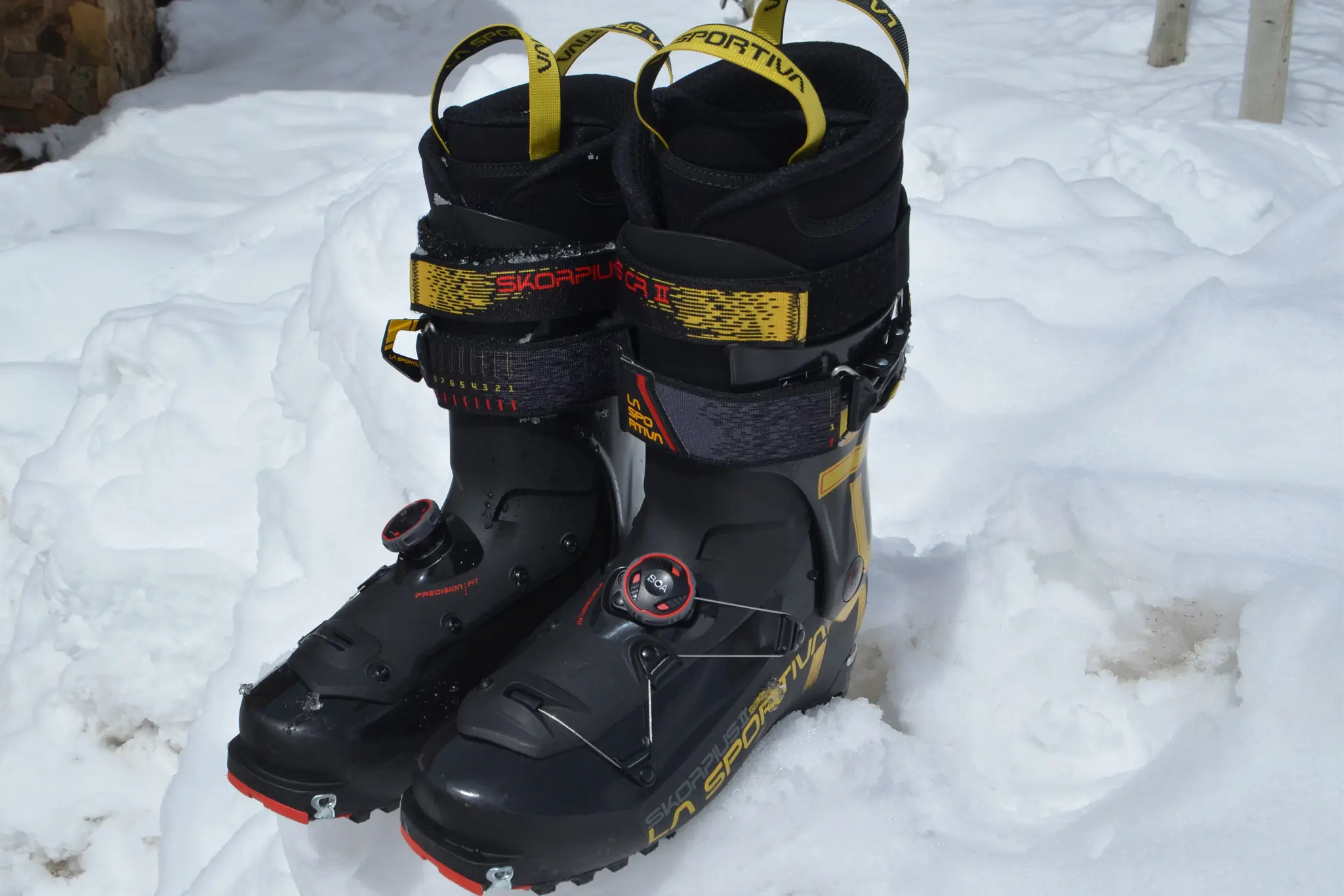
I ended up adding thin heel shims under the liner to mitigate slight heel lift — which I add to almost every boot along with my own footbed. The factory footbed is ultra thin, so you’ll want to replace it immediately.
On my third day in the boot, about 28 miles into a training tour for an upcoming long-distance skimo race, I was flummoxed. With hooves like these (ultra-high arches), it’s rare that I can put on a new boot and go for any tour without pain or blisters. Sure, my feet weren’t thrilled after 9 hours in ski boots. But I made it through without any pain meds or blister mitigation.
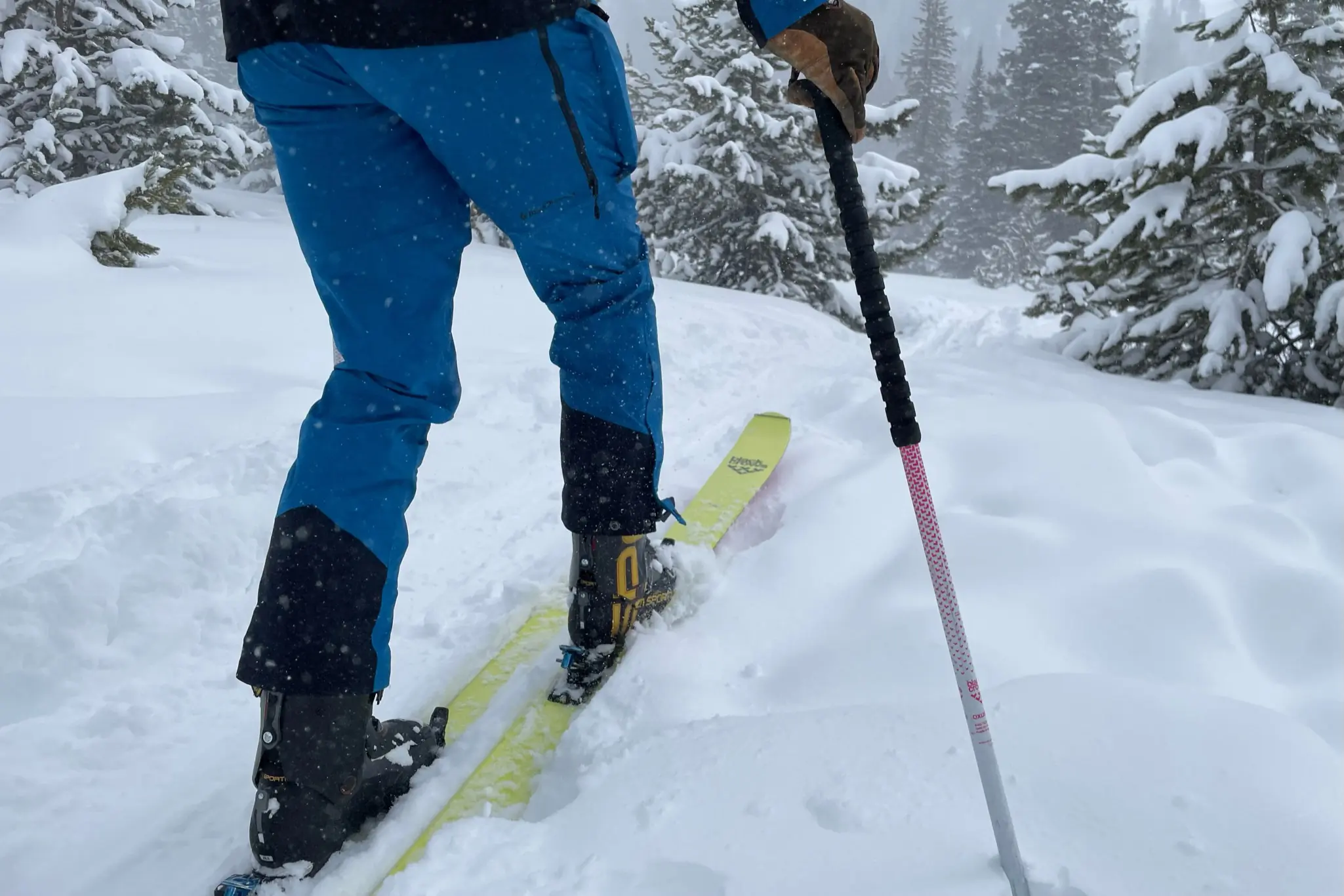



The Down
When you lock down the Skorpius, one thing is immediately apparent: There’s a lot of cuff and tongue pushing back on your shins. In this regard, they don’t feel like lightweight touring boots typically do. They feel more like the first time I ever put on the venerable Dynafit Vulcans, which from the cuff up, felt like an alpine boot.
That feeling translates to skiing. The cuff and tongue provide a dense and progressive flex that I certainly wasn’t expecting from such a light boot. I’m more accustomed to the rigid wall or knee-to-ski collapsing dichotomy that plagues lightweight boots.
At the bottom of my first run on my Black Crows Orb Freebird, I was scratching my head; why do I have a two-boot quiver for backcountry skiing?
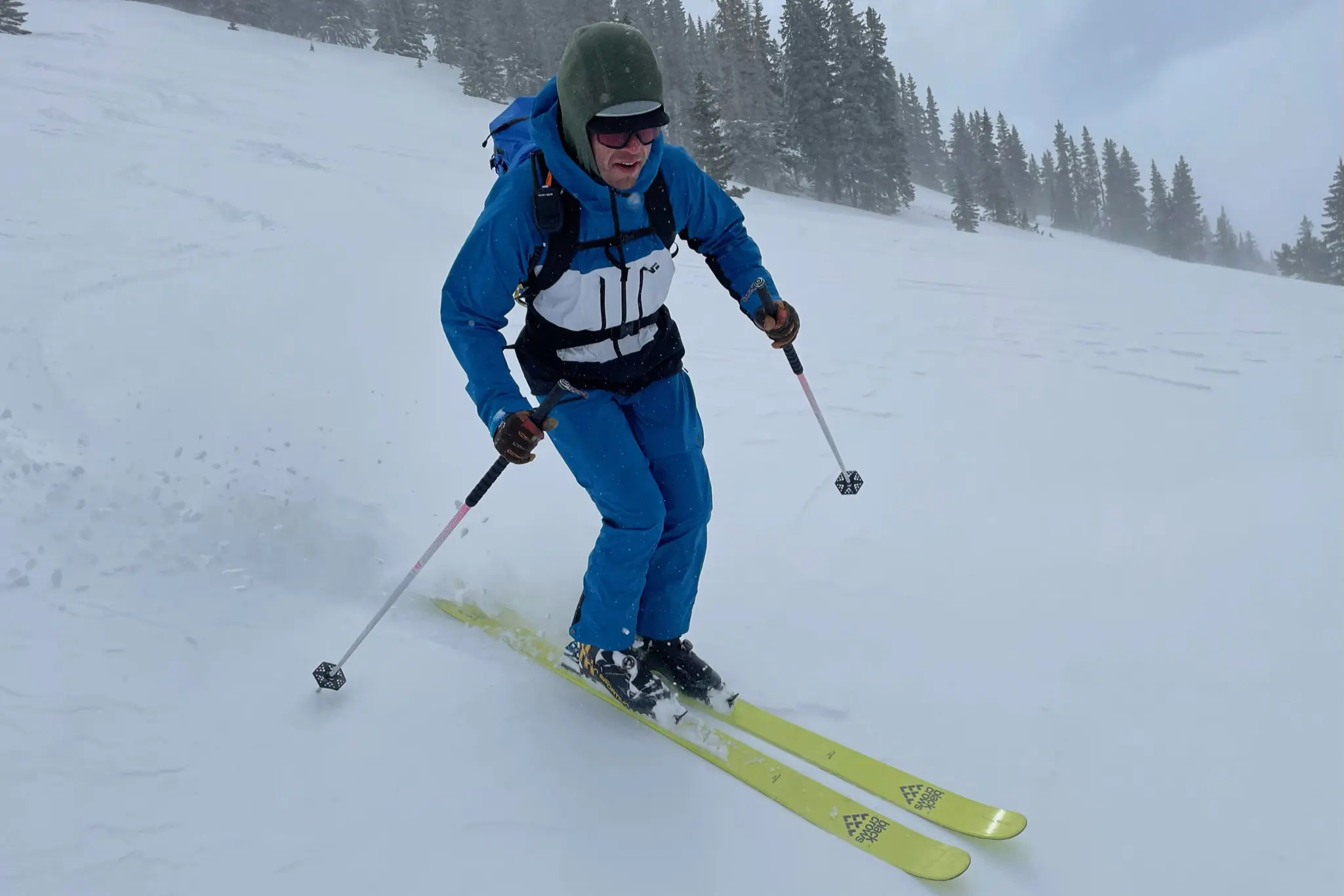



Testing on Other Skis
I took them out another day, this time paired with my bigger ski, a 189cm Kastle TX103. My TX103s don’t play nicely with all lightweight boots, especially in mixed conditions.
Alas, I was surprised again. The Skorpius brought the power and foothold required to pilot the bigger ski. That progressive flex kept me from going “over the bars.” Overall, it paired quite nicely with the TX103. Yes, the TX103 is a remarkably nimble and easy-to-ski big ski, but the point still stands: The Skorpius can pilot a wide range of skis and punches above its weight class.
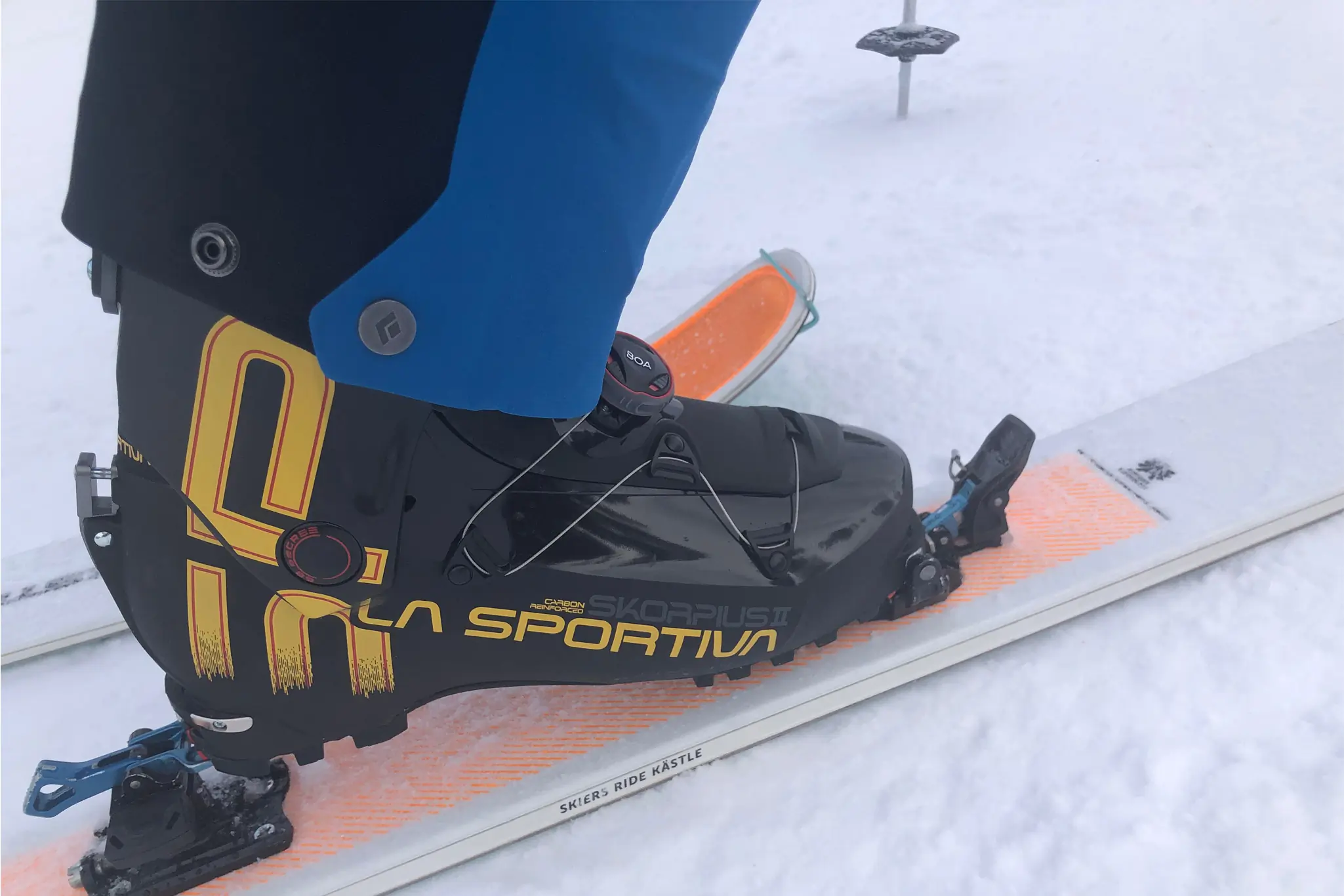



Based on La Sportiva’s specs, I attribute much of the boot’s power to the cuff’s height and 30% carbon reinforcement (that’s where the “CR” in the name comes from). The lower boot only has 10% carbon and is significantly more forgiving.
On the other end of the spectrum, I paired the boot with both a Dynafit PDG skimo race ski and a Black Crows Mentis Freebird. Both pairings were phenomenal climbers, as you might expect. I was able to push deep into the Skorpius’ flex on piste with the Mentis, and man, was that more fun than I expected; maybe as much fun as you can have on a ski that skinny. I felt like Mikaela out there ripping slalom turns.
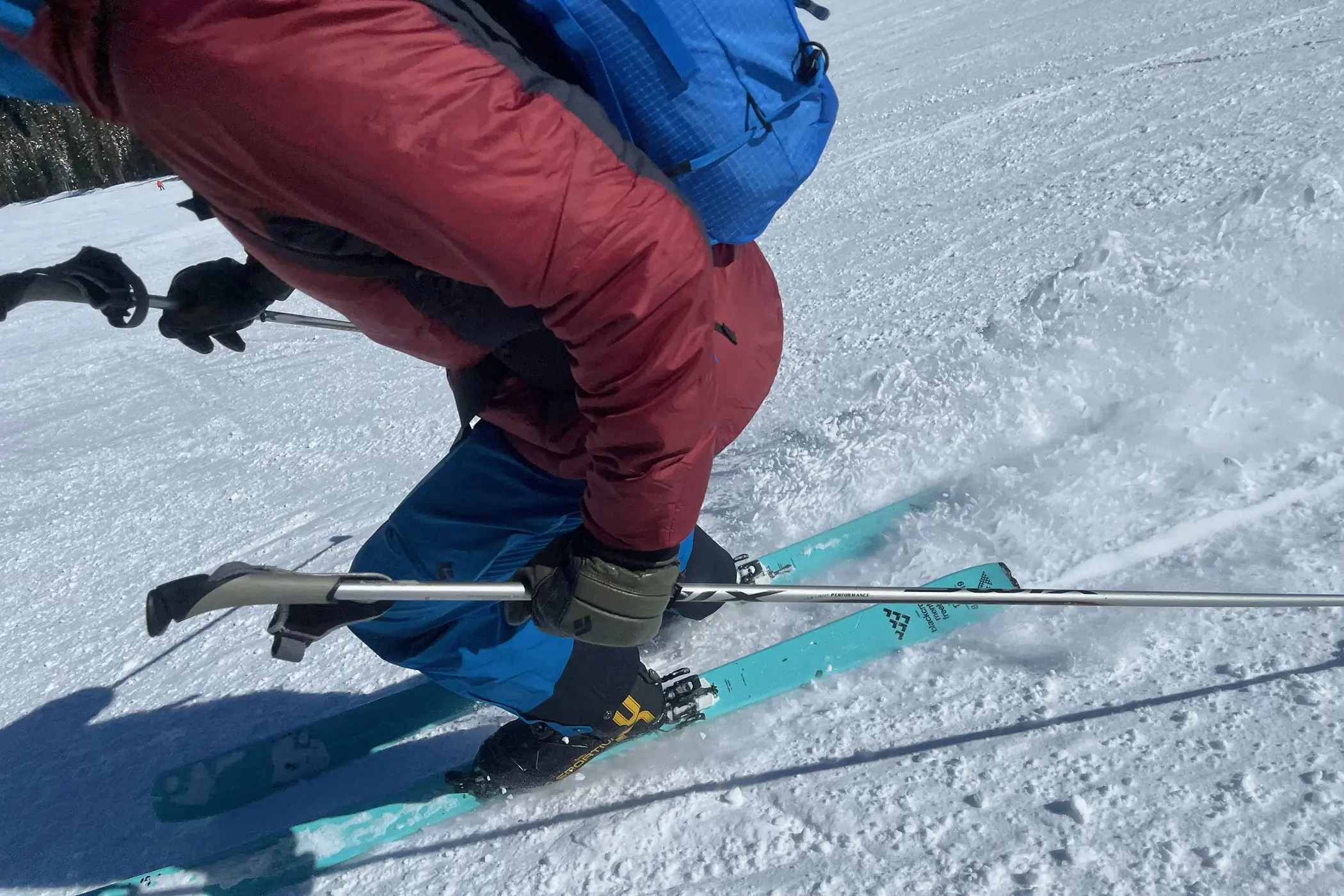



Tightening
The Skorpius tightens down with an increasingly common Velcro top strap buckle, velcro power strap, and instep BOA. I struggled to get the tightness I wanted on the first try. The buckle lever doesn’t provide much leverage on the Velcro strap.
I feel the same way about the Scarpa F1, which utilizes a nearly identical buckle strap. I end up buckling it down, tightening the power strap, then readjusting the main strap, and buckling over again to get the fit I want. Which ends up being excellent — it’s just time-consuming.
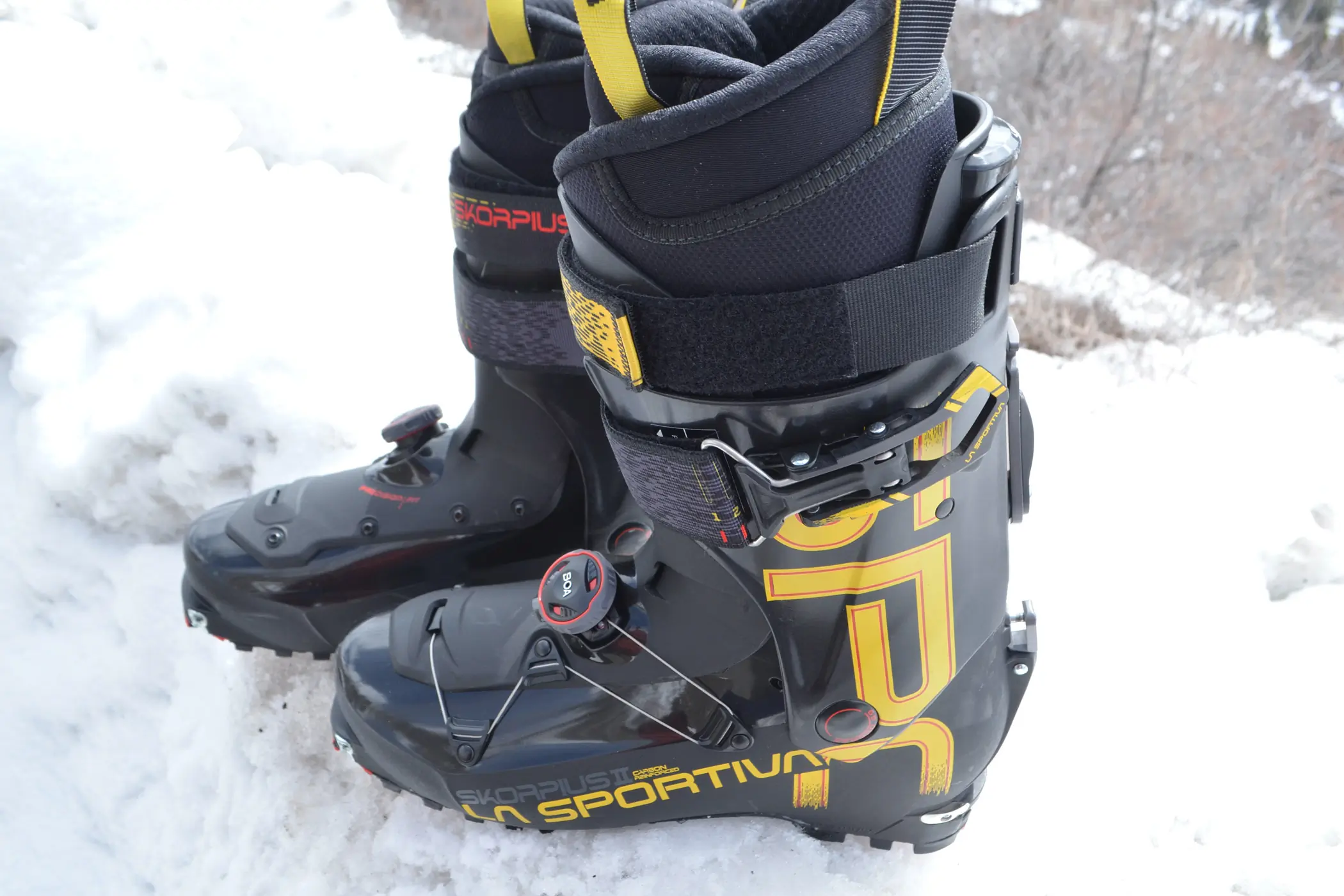



It’s a similar story with the BOA dial. It’s tough to get leverage on the round knob to crank it tight. I was able to get the tightness I wanted eventually, but wingnut-like flanges on the BOA dial would help immensely.
The Skorpius’ “Swing Lock” mechanism is unique compared to other boots on the market (pictured below). Instead of a vertical lever that flips down to lock the boot into ski mode, it utilizes a spring-loaded swinging lever that rotates like the hands of a clock. It’s certainly effective and the power transfers well. It interferes with your pants cuff about as much as any other lever.
Overall, it’s effective and intuitive.
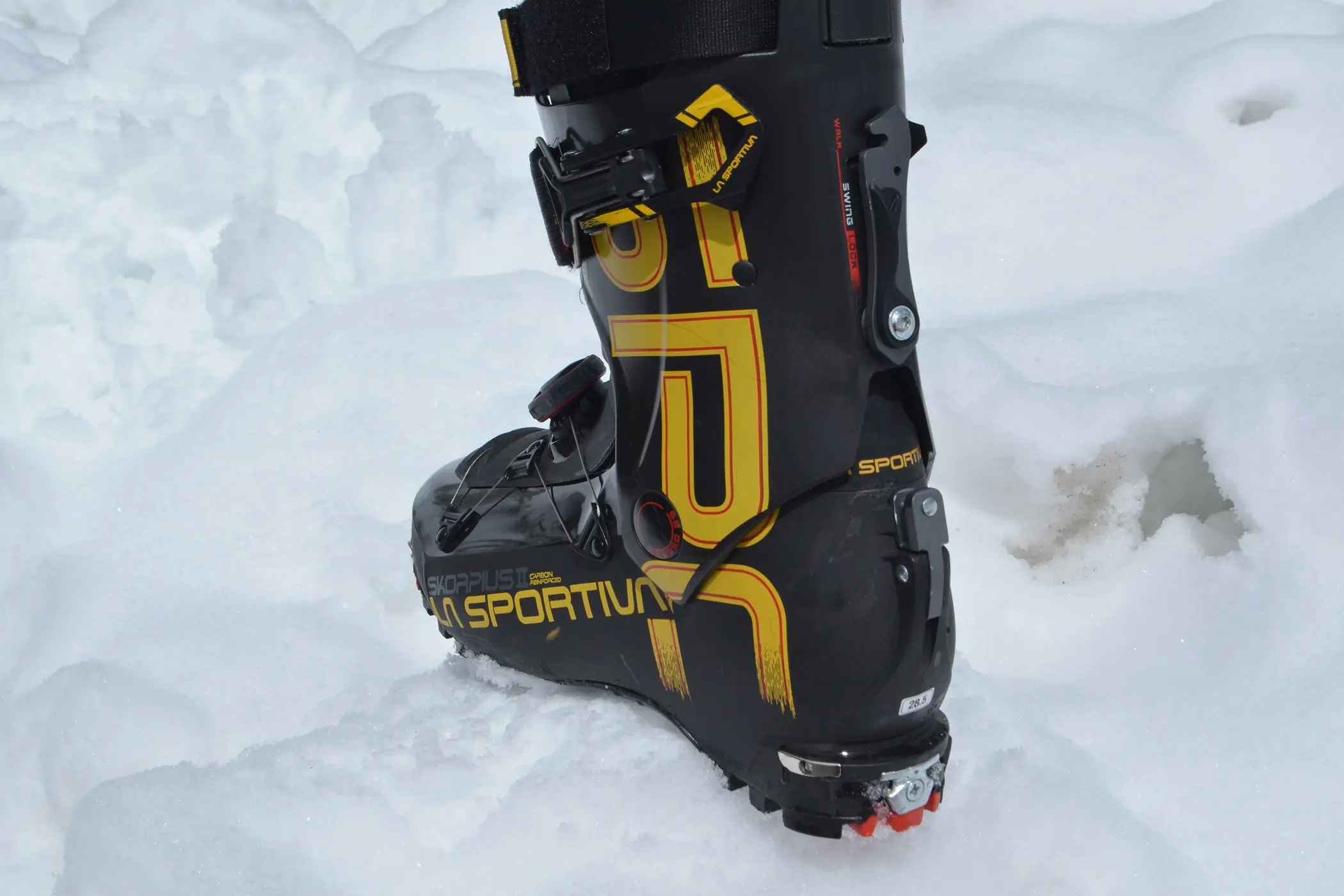



Scarpa F1 Comparison
Scarpa’s F1 boot has been a lightweight staple for years. It’s an excellent boot for comparison because it’s in the same weight and use class as the new Skorpius, and their Velcro buckle/BOA systems are nearly identical.
In terms of fit, the Skorpius is much roomier in the toebox. The F1’s shell has a narrower toe, and thus a snug “performance” fit up front. I needed to add heel shims to both boots to mitigate heel lift, but the heel security nod goes to the Skorpius.
Moving up the boot, the Skorpius has a taller cuff and generally delivers more power. The F1 is no slouch in this regard, but I found the taller cuff delivers more power with less strap tightening.
I’m not a huge fan of the Velcro strap top buckle on either boot — or Velcro at all on high-end products — yet both of them perform just fine. The Skorpius’ buckle seems to have slightly more “throw” and leverage than the F1’s.
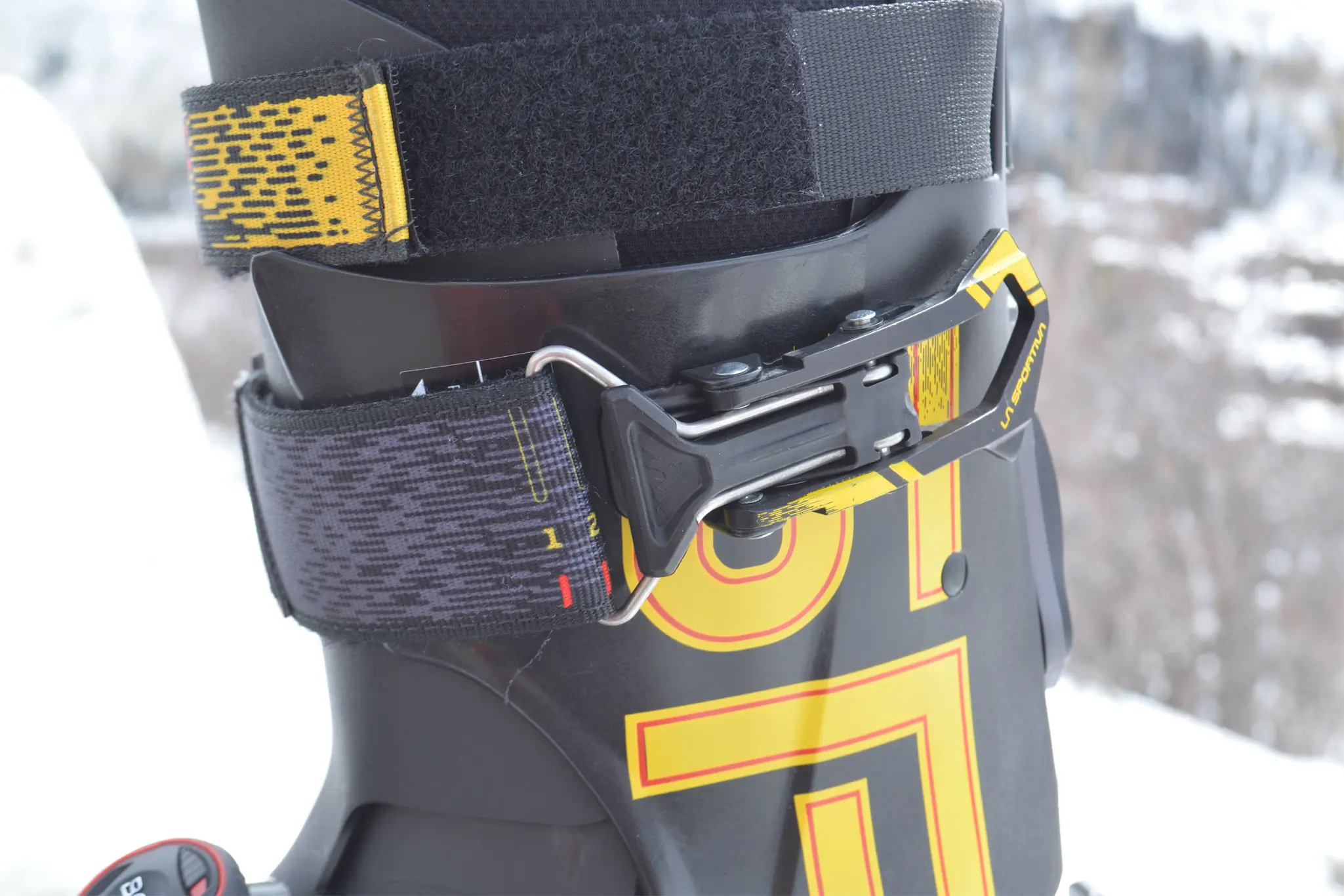



With all the power it delivers, the Skorpius is able to drive a wider variety of skis than the F1. My F1 is an excellent match for my 178cm Black Crows Orb Freebird. But it struggles with bigger skis in challenging conditions.
While fit is highly subjective, I prefer Scarpa’s Mondo sizing over La Sportiva’s. Scarpa’s sizes break on the full size (i.e., 27.5 and 28 are in the same shell size), whereas La Sportiva and other brands like Dynafit break on the half size (i.e., 28 and 28.5 are in the same shell). I end up needing to jump to a bigger shell than I’d prefer with the latter, but again it’s a matter of personal preference and foot size.
Skorpius CR II: Conclusion
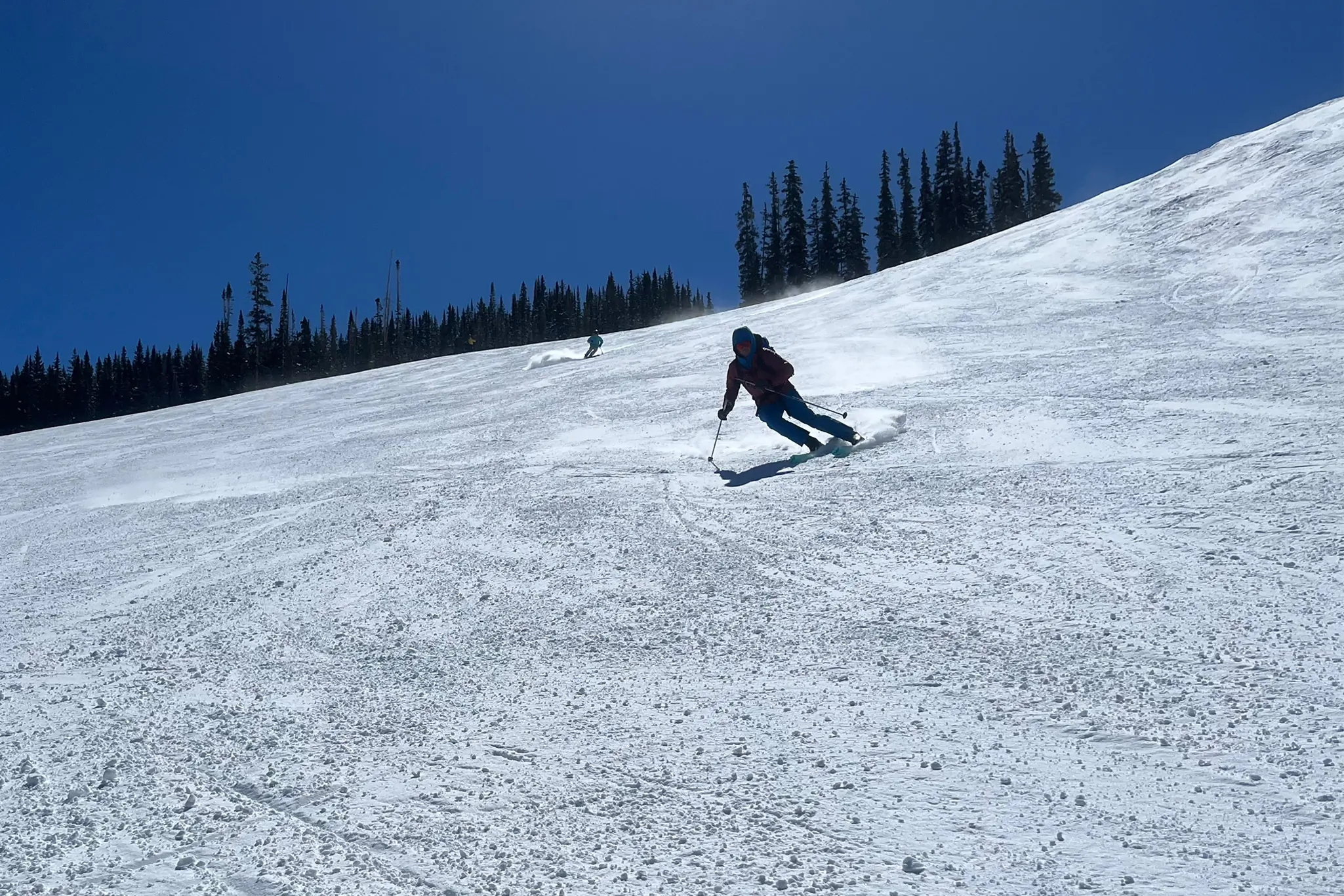



The Skorpius CR II continues to impress me. I don’t love the BOA or Velcro strap buckle, but the boot performs on both the uphill and downhill. It has a generous range of motion, low weight, and plenty of power. It’s not only stiffer than most boots in its class, but it’s also more progressive and supportive.
All that and it’s comfortable? I’m looking forward to more long days with these boots on my feet.
